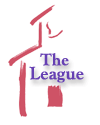
|
Learn & Serve Grants
Copies of Overheads
Download all overheads (pdf)
Why Are We Here?
- Learn and Serve grants are as much about building schools' capacity to integrate service learning into their curricular choices and instructional practices as they are about carrying out service learning projects.
- Learn and Serve grants need to produce knowledge that will benefit future grantees.
Learn and Serve grants can help us better understand how schools can meet NCLB requirements.
Our Theory of Action
We all bring expertise to this effort. Our collective success depends on our ability to learn from each other.
The Primary Purpose of Public Education
The goal of American schools is not to be first internationally in mathematics or science, or to teach basic skills or critical thinking, or to graduate students from high school. At best, these are sub goals of the larger, single goal of public education...[to] prepare students to become productive citizens of our democracy... Our country would be better served by schools that produce caring, intelligent, and wise citizens who willingly engage in the work of a democracy than by schools that produce graduates who do well on isolated sub goals. -- Carl D. Glickman
What is Service Learning?
Service learning is a K-12 teaching methodology that provides students opportunities to apply academic skills and knowledge through active participation in addressing a community need, issue, or problem.
What are the components of service learning?
- Preparation
- Planning
- Need identification
- Standards alignment
- Collaborators
- Expected outcomes
- Action
- Service to be provided
- Who will participate?
- Reflection
- Conduct throughout process
- Evaluate effectiveness of service learning
- Mastery of academic standards
- Celebration
Democratic Learning
The purpose of democratic learning is to provide all students with strong academic and social skills, problem-solving abilities, and civic attitudes that will equip them to work for a better democratic life for all.
- Students work actively with problems, ideas, materials, and people as they learn skills and content.
- Students have escalating degrees of choice within the parameters provided by the teachers.
- Students and teachers work together to make students' learning a contribution to their community.
- Students demonstrate their learning in public settings and receive public feedback.
- Students are assessed according to high academic standards, as well as contributions made to a larger community.
Teamwork and Collaboration
"Evidence for the benefits of collaboration, rightly conducted, are overwhelming. The nature of the complex work of teaching 'cannot be accomplished by even the most knowledgeable individuals working alone.'"
--Little (1990), p. 520, as quoted in Schmoker, p. 12
Professional Learning Communities
"Almost every teacher we encountered who pursued notions of alternative practices for his or her classroom on a sustained basis, who felt excited about workplace challenges and engaged in issues of practice and pedagogy, and who expressed energy and continued enthusiasm for the profession was a member of a strong collegial community, a community of learners." --Milbrey McLaughlin
|